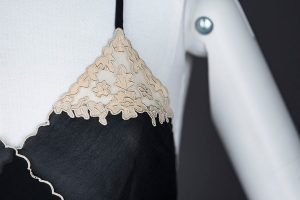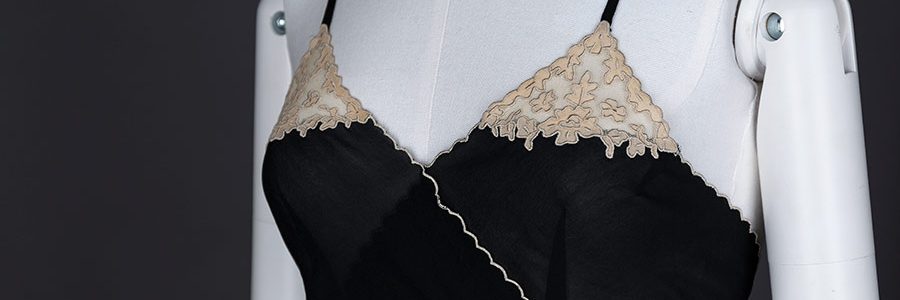The Changing Fashion Of Breast Shape
The December issue of British Vogue has generated a lot of discussion in the last week for declaring that cleavage is over. Media outlets were jumping on this story right away, declaring that UK women were outraged at at the suggestion and that women with big boobs can’t just put them away. The first thing I noticed about these news stories was that the women whose tweets are quoted seem to be confusing the word cleavage with the word breasts. It’s plunging necklines that are not being spotted on the red carpet, but… those women still have boobs! They’re merely covering them up with fabric rather than putting them on show.

Kathleen Baird-Murray’s Vogue article actually says: “The cleavage – those magnificent mounds pushed together to display sexual empowerment, to seduce, to inspire lust or even just to show off – is over, or at least, taking a well earned break.” The Pool’s Caroline O’Donoghue picked up on this in her amusing post on packing away your cleavage but, although she’s right about the focus now being on covering up that particular area of a woman’s body rather than putting it on show, she fails to mention one vital point.
The ideal fashionable silhouette has always changed – and not just for women – so people who want to be fashionable have to select their clothing and underwear accordingly. Since the bra was first developed, the fashionable breast shape has changed with each decade, often quite dramatically. I’ve done a fair bit of research on the history of the bra and so I came up with a rough guide to how the fashionable breast shape has changed in the last century.
1910s – Matronly monobosom
1920s – Youthful flat-chested look
1930s – Separated ‘natural’ shape
1940s – Perky and pointed
1950s – Padded, for extra oomph
1960s – Lift and separate
1970s – Relaxed ‘natural’ shape
1980s – Hidden away from view
1990s – Pushed together, for maximum cleavage
2000s – Round and nipple-free
2010s – Returning to a ‘natural’ look
As far as catwalk fashion goes, there are a lot of high necked looks around at the moment which hide the breasts away, much like some 80s styles. However, when it comes to underwear, The Guardian’s Fashion Editor Jess Cartner-Morley was spot on in her analysis when she commented that “the more natural ‘70s boob’ is making a comeback.” As a massive fan of the beautiful soft shapes of 1930s and 1970s bras, I’m delighted that they’re being reinterpreted for the twenty-first century.

As with a lot of fashions, many of these styles work best on a slender youthful body, but that doesn’t mean that those with larger breasts can’t find supportive wire-free bras which provide the support they need. The key thing to remember is that, these days, no one has to follow any so-called fashion ‘rules’ set by glossy magazines as we have so much variety available to us in the types of clothing we can purchase. So you be a 20s girl in a bandeau or a 50s girl with under-wiring… but perhaps the monobosom look is best avoided these days!
